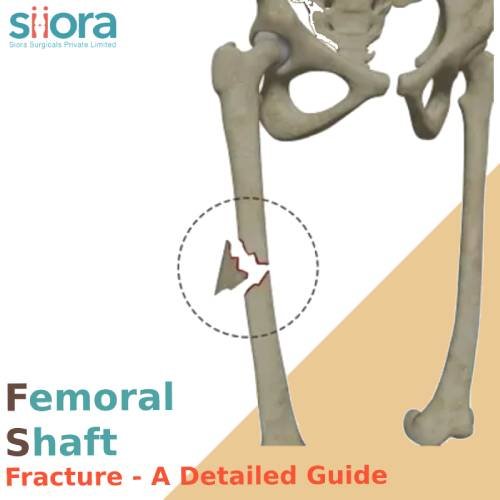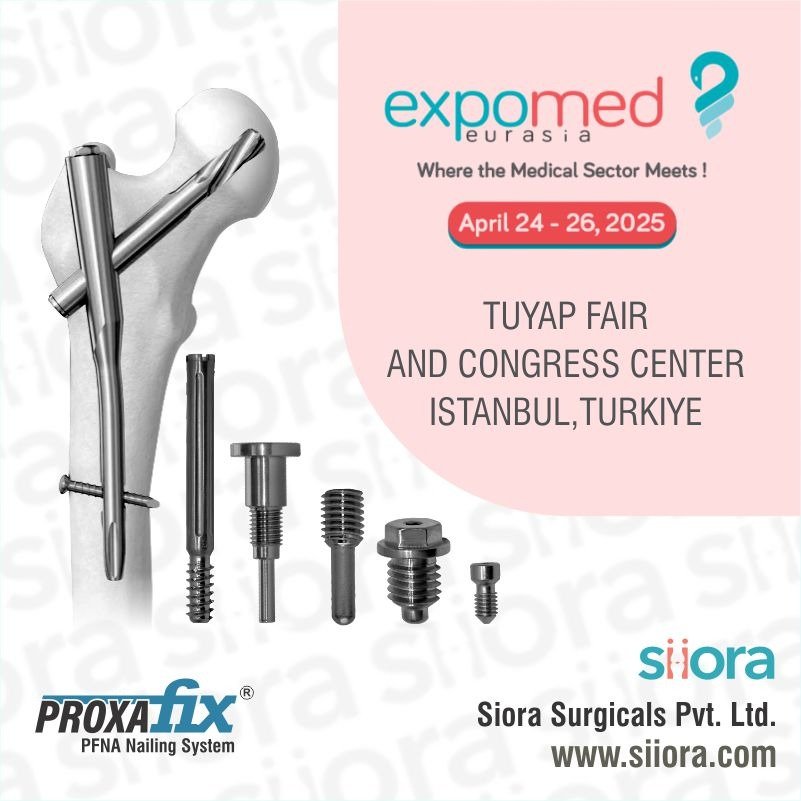Femoral shaft fractures are those where the break is along the length of the bone. These fractures are often severe and need surgical intervention.
Femur is the longest and strongest bone in our body which connects the hip from its proximal end and forms the knee joint from its distal end. Also known as the thigh bone, the femur is the only bone in the upper leg. This bone plays a vital role in the way one stands, walks, and maintains body balance. When the femur breaks, all the functions that it involves get compromised. In this post, we will see some details about femoral shaft fractures. Let us start with a brief introduction to the fracture.
What Are Femoral Shaft Fractures?
Femur is a long bone and a break anywhere along its length is a femoral shaft fracture. It is a very strong bone and a break in this bone occurs because of severe trauma like automobile accidents. A break in this bone always demands surgical intervention as it occurs because of high-intensity trauma. As a result, healing also takes time.
The type of femur fractures varies greatly, and this depends on the cause of the injury. Broadly, Femur shaft fractures can be classified as:
- Stable
- Unstable
- Closed
- Open
Let us have a look at them one by one:
Stable Femur Shaft Fractures
Stable fractures are those in which the broken bone fragments are aligned properly in their anatomy. These fractures may heal without any surgical intervention. However, surgery may be needed when no healing progress is there, after trying non-operative treatments.
Unstable Femur Shaft Fractures
As the name suggests, unstable fractures are those where the bone fragments move out of their places after the fracture. These types of fractures are severe, and surgery is always required for fracture management. Orthopedic implants for the femur are used to stabilize the fracture after restoring its true anatomy.
Closed Femur Shaft Fractures
Closed fractures are when the skin over the fracture site is intact. Here, open reduction and internal fixation is the surgical option for fracture fixation.
Open Femur Shaft Fractures
These are severe fractures in which the skin over the fracture site ruptures and bleeding is there. In comparison to closed fractures, open fractures are severe as there is a high risk of infection because of an open wound. Thus, immediate medical help is necessary in such fractures.
Comminuted Femur Shaft Fractures
These are also severe fractures in which the femoral shaft breaks into multiple pieces, generally more than three. Internal fixation is also the best treatment option for comminuted femoral shaft fractures. Sometimes, the fracture is complicated enough that the orthopedic specialist initially recommends external fixation.
What Are the Causes of Femoral Shaft Fractures?
The femoral shaft can break because of high-energy trauma as well as low-intensity injuries. However, this depends on the age of the patient and his/her overall health condition. In most cases, a femoral shaft breaks as a result of high-intensity trauma like car crashes, falling from a height, gunshot wounds, or a direct impact with a solid & heavy object. In young adults, the femur is strong, and only forceful impacts can result in a break.
When it comes to femoral shaft fractures because of low-intensity trauma, then it is common in the elderly and people with conditions like osteoporosis. This is because bones in the elderly and osteoporotic people are weak, hence, a break may occur even with a slight jerk. People suffering from osteoporosis can also get a fracture in the thighbone because of the awkward twisting of the leg. Similarly, an elderly may experience this while trying to lift a heavy object.
What Are the Symptoms of Femoral Shaft Fractures?
A fracture is a painful condition and based on the cause, the pain could be mild or severe. If we talk about femur shaft fracture, pain is intense because the injury occurs because of high-energy trauma. Here are the common symptoms of femur shaft fractures:
- Severe pain
- Inability to put weight on the injured leg
- Difficulty or pain while walking
- Swelling or pain in the thigh along with bruising
- Deformity around the thigh
- The injured leg may appear shorter than the other
- In the case of open fractures, the bone moves out of the skin
What is the Diagnosis of Femoral Shaft Fractures?
A thorough examination of the site of fracture is important to decide the best treatment. At first, the healthcare service provider will look for visible signs & symptoms that include swelling, bruising, and deformity. Besides this, the patient may also be asked to move the injured leg in different directions to examine the range of motion and painful areas.
After the physical examination, the orthopedic specialist will order imaging tests to confirm the fracture and assess its severity. The tests ordered may include:
- X-ray examination
- CT Scan
- MRI
- Bone Scan
What is the Treatment for Femoral Shaft Fractures?
The treatment of fractures in the femur shaft depends on their severity. However, maximum fractures require surgical intervention. Here are the treatment options for femoral shaft fractures:
Closed Reduction
Closed reduction is the option for mildly displaced fractures where the orthopedic specialist will reduce the fracture by physically manipulating the broken bone. Before closed reduction, the orthopedic specialist will give anesthesia to the patient. Here, the orthopedic specialist does not need incision. After closed reduction, the orthopedic specialist will apply a cast to immobilize the fracture and allow it to heal.
Casting
Casting is often applied after closed reduction and surgery. However, in some cases, especially stable fractures, a cast is the first line of treatment. This is because in those cases, the fracture is correctly aligned, and for proper healing to occur, immobilization is needed. A cast will provide the stabilization.
Internal Fixation
Open reduction and internal fixation is the commonest surgical procedure for the treatment of femoral shaft fracture. Here, the orthopedic surgeon will make an incision over the fracture site and manually realigns the bone before applying orthopedic plates, screws, and other implants. After this, the surgeon will close the incision with stitches, staples, or glue.
External Fixation
In some cases of femoral shaft fractures, internal fixation is not feasible. There, the orthopedic surgeon will use external fixation for stabilizing the fracture temporarily. After some time, the surgeon will perform internal fixation.
In external fixation, the pins, wires, and screws are applied internally, and they are attached to an external metal frame made of a network of bars.
Intramedullary Nailing
Intramedullary fixation requires intramedullary nails or rods. With this technique, the orthopedic specialist inserts the nail into the intramedullary cavity of the bone. These interlocking nails hold the fracture in place while allowing it to heal.
The type of treatment required depends on the severity of the fracture and its pattern.
To get a CE-certified range of orthopedic implants and instruments, contact Siora Surgicals Pvt. Ltd., a renowned orthopedic device manufacturer in India. The company has a strong global presence and it serves around 130 national and international distributors and orthopedic surgeons. The company is also a regular exhibitor at America’s leading healthcare event FIME Trade Show.








